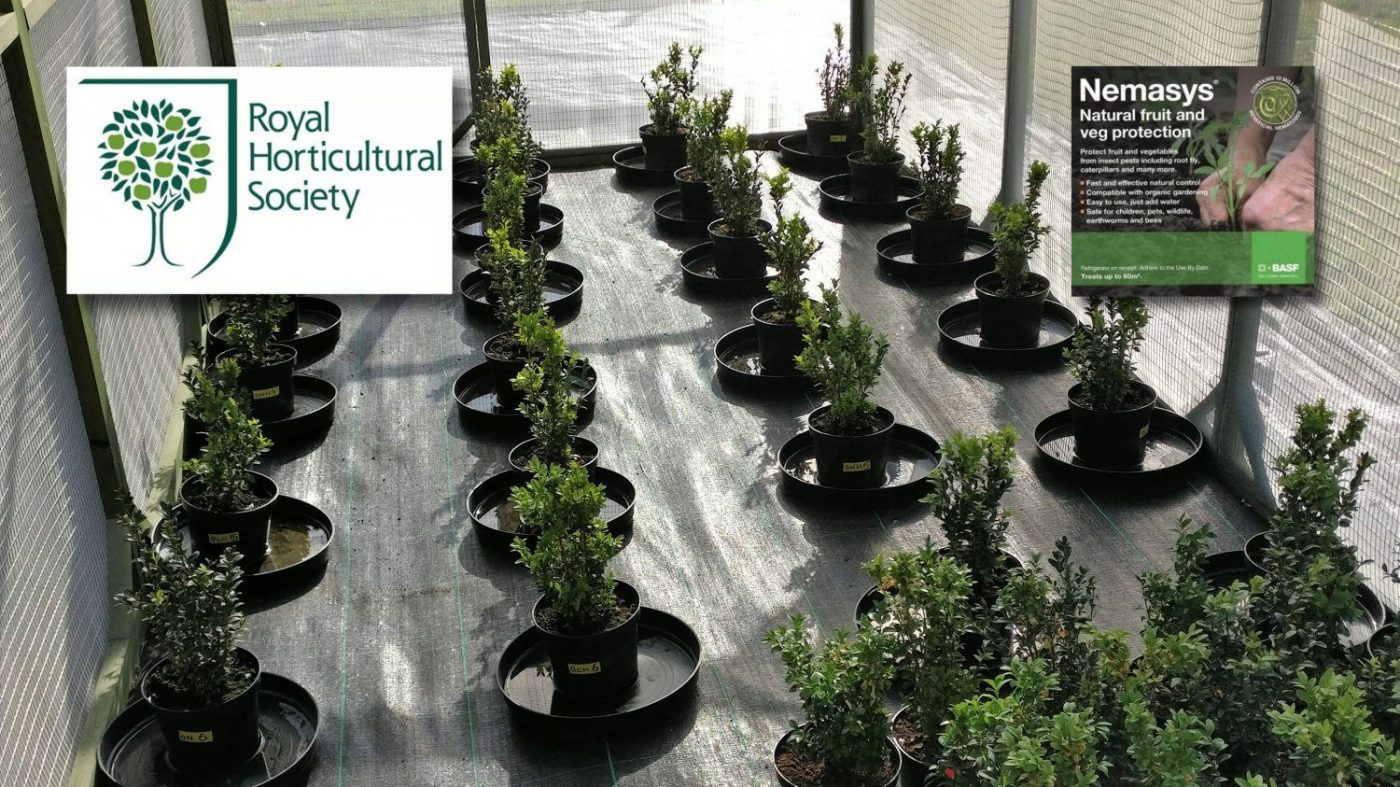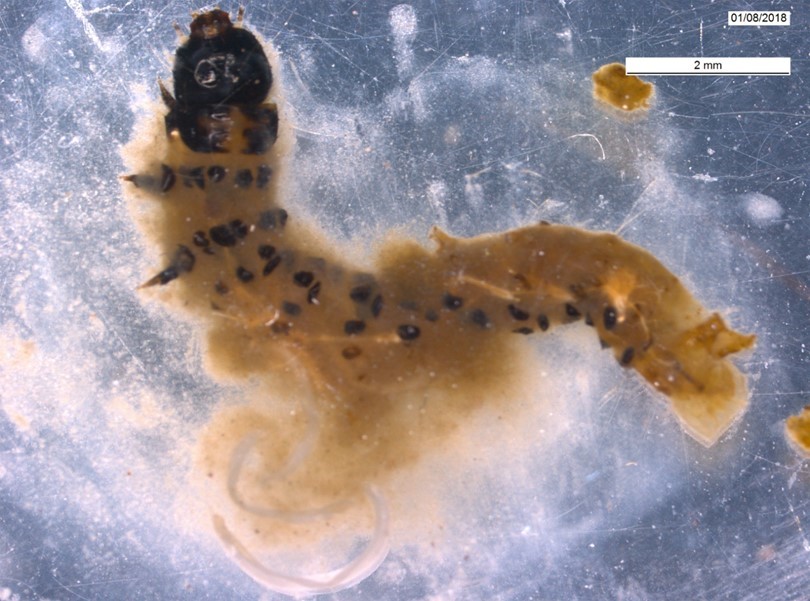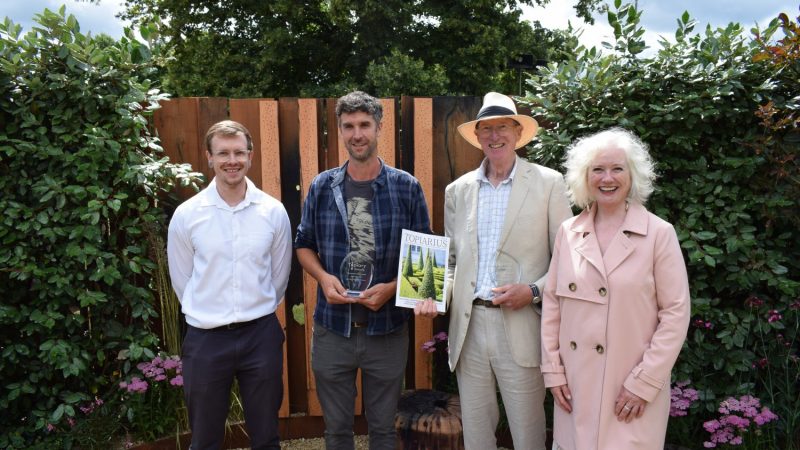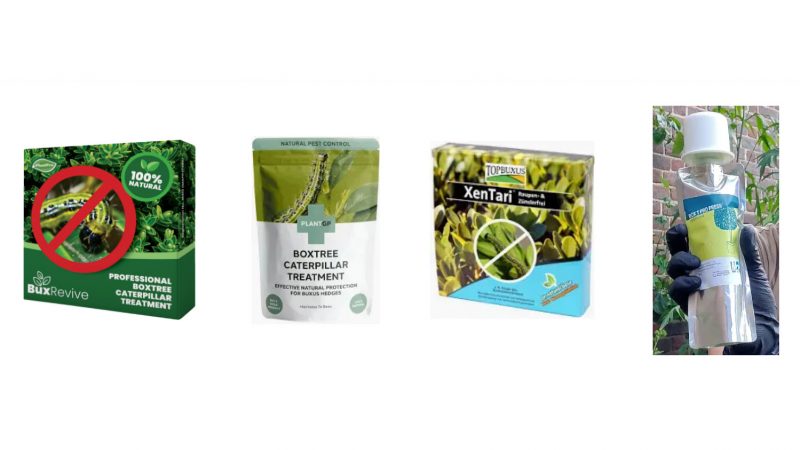RHS Testing of Nematodes for BASF
For some year’s gardeners have been using nematodes to treat a number of issues in the garden. BASF produce a range of nematode biological control products called Nemasys, with nematode species mixes that target a number of pests including slugs, ants and vine weevil, alongside a more general product to tackle insect pests in the vegetable garden (Nemasys Fruit and Veg Protection). These products all use nematodes to control the pests and they are supplied as a dry mixture that is diluted with water and applied as a spray. Nematodes are very small worms that get inside the body of susceptible hosts, releasing bacteria which then leads to the death of the host. As nematodes are a living product they need to be used relatively quickly once they have been supplied (they will last up to two months if kept in a fridge).
Although Nemasys Fruit & Veg Protection has been used by Buxus owners to treat box moth caterpillar infestation, its efficacy, specifically against box tree moth outside of lab settings, has not been proven in the UK. Nematodes have been found to be very effective in laboratory conditions giving 100% mortality rates after 7 days (Gottig, 2017), but labs aren’t gardens. With 38% of 1400 UK gardens surveyed growing box and the huge increase in problems caused by the caterpillar, verifying the effectiveness of the nematodes and the additional measures suggested to improve how well they work in garden situations will help inform gardener’s treatment decisions. Dr. Stephanie Bird, a scientist in plant health at the RHS, was tasked with running semi-field tests to see how effective the nematodes were, and she has shared her findings with EBTS UK.
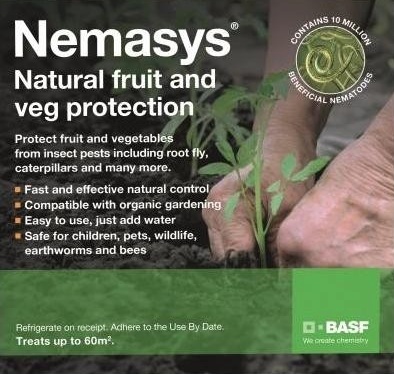
The Trials
The Field Research Facility, Deer’s Farm at RHS Wisley was where two sets of 24 plants were located, one set outside in a netted cage and the other in a controlled environment chamber. The controlled conditions were kept at a standard 25°C during a 12hr daytime and 17°C overnight with humidity of 65%. The outside plants were subject to the 2018 summer, which was rather warmer and dryer than usual. All 48 plants, laid out in two grids of 4×6 with 60cm spacing, were intentionally infected with 5 early instar box tree larvae (the caterpillars go through 7 stages of development with each stage called an instar).
Stephanie was also testing to see if horticultural fleece would help increase the effectiveness of the nematodes, the thought being it would increase the humidity within the plant thus favouring the nematodes survival and pathogenicity (Kung, Gaugler & Kaya, 1991). To this end 12 of each set of plants was covered with 30gms fleece.
The plants were then treated as follows:
6 plants without fleece – Nematodes + water
6 plants with fleece – Nematodes + water
6 plants without fleece – Water only
6 plants with fleece – Water only
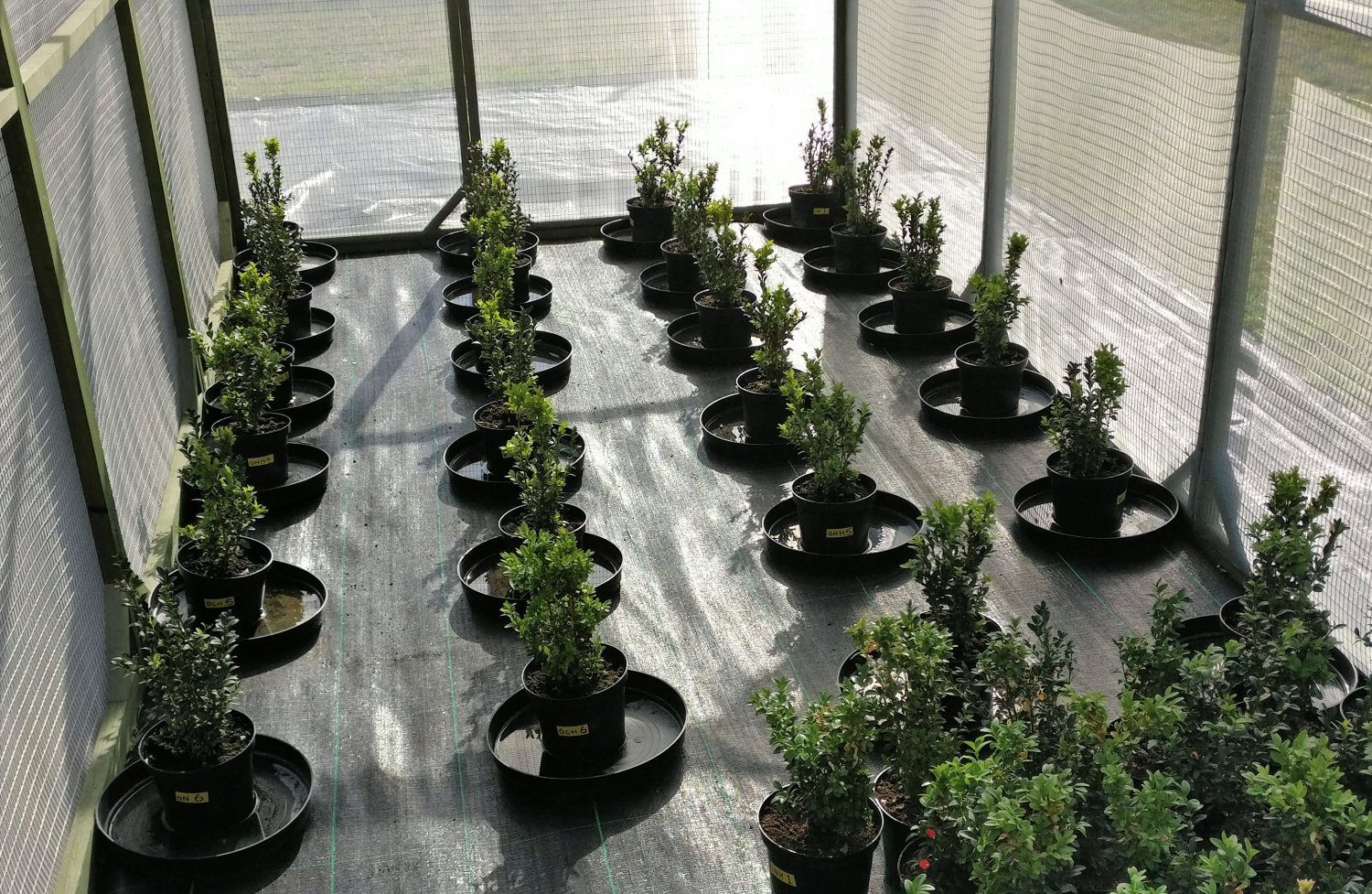
The treatments were applied between 20:30-22:00 in the evening at weekly intervals for 6 weeks using a spray bottle with medium spray nozzle (large enough to allow the nematodes to pass through it). This avoided peak temperatures and UV levels both of which are likely to kill the nematodes. Larvae were inspected 3.5 days and 6.5 days after treatment to determine their status i.e. alive, pupated, dead or missing (they can move quite quickly and hide very effectively!). Dead larvae from the plants treated with nematodes were retained for dissection to determine whether they had been infected by the nematodes. In line with RHS box management recommendations all plants were watered at their bases, however, the treatments (both nematodes and control) required the foliage of the plants to be wetted, as this increases humidity within the plant, potentially moving conditions towards those that favour fungal growth, all plants were assessed weekly for evidence of Cylindrocladium buxicola infection. There was no evidence of box blight during the trial.
The Results
The box tree caterpillars were successfully infected where treated with the nematodes (a mix of Steinernema species) whilst the larvae that died on the control plants showed no sign of nematode infection. However, Stephanie observed that
C. perspectalis larval mortality on the nematode treated plants was very low for the first three assessment occasions (days 4,7,11 and 14), however, after the third application (day 14) there is an increase in the number of dead larvae. This could be due to the behaviour of the larvae; younger/smaller individuals tend to be more protected. They conceal themselves between webbed together leaves where they feed in relative safety, this may make it more difficult for the entomopathogenic nematodes to find and infect them…
Nematodes should ideally come into contact with the larvae when the treatment is applied as they will die if they aren’t in a moist environment. It was also found that of the larvae that were still alive after the 42-day trial those that had been treated with nematodes were looking distinctly unhealthy being much less responsive than normal and it was suggested that they may fail to pupate.
The horticultural fleece did not significantly increase the mortality of the treated larvae, but this was thought to be because the fleece didn’t increase the humidity levels and therefore the conditions that would have helped the nematodes. From a gardener’s point of view, fleecing plants to treat them isn’t always going to be a practical or visually pleasing option, so in some ways it was good that the research didn’t end up recommending it.
Conclusion
The overall conclusion was that larvae mortality was 39-48% (excluding missing individuals) on plants treated with Nemasys Biological Fruit and Veg Protection. Comparing this to treatment by Bacillus thuringiensis (in products like Dipel or XenTari) where infected larvae stop eating within an hour and are dead within 48hrs, it is less effective. However, under the right conditions it is another tool that offers no pest resistance issues that is available to try and control the problem faced by boxwood owners who have box tree caterpillar infestations. In the future the RHS plan to continue research into strategies for managing both the pest and disease threats faced by box. (Note: neither Dipel or XenTari are currently registered for domestic use in the UK).
EBTS UK would like to thank Stephanie Bird of the RHS and BASF for making the results of this research available.

We Have A Winner
Congratulations to EBTS UK member Justin, who entered his email address to win a full treatment of Nemasys Fruit and Veg Protection (6 packs) courtesy of BASF.


